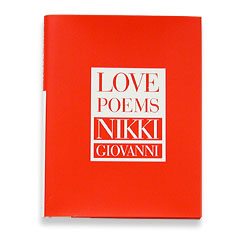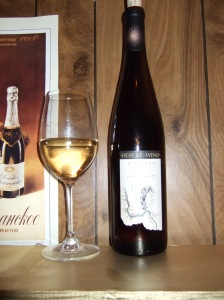Hi there, ya’ll! I know you’re reading this in October, but I wrote it at the end of September. You see, I’m in the process of getting ready for my harvest internship, and I’ve been stressing out a little bit lately. (A lot, actually.) Guys, I freak out over change, and am a little bit terrified about getting what I want. As my friend, Parker, cheesemaker extraordinaire says, “That’s some stupid hipster shit.” And he’s right. Tomorrow I’m moving to the lovely little town of Carlton, though I still have two courses (Plant Nutrition and Food Chemistry Fundamentals) happening down in Corvallis. I’m going to be busy this fall.
So naturally, I decided to organize my wine instead of packing.
My collection’s heavily skewed toward Oregon and Washington with a minor contingent from northern Italy and three lonely McLaren Vale Shiraz. I’ve really got to diversify.
Then read some poems by the incomparable Nikki Giovanni.
I wish everybody had a copy of this book, because when you read:
Some people don’t remember that love is
listening and laughing and asking questions
no matter what your age
you know that it’s true, and you remember part of what it means to be a human.
Which is, of course, what I love about wine. In my free week before starting this internship, I took the opportunity to head to the north and the east to sample some Washington wines. It’s been about two years since I visited Prosser, which is located in a prime location with access to grapes from the Wahluke Slope, Horse Heaven Hills, Rattlesnake Hills, Red Mountain, Snipes Mountain, Yakima Valley, Columbia Valley… so many of Washington’s premium winegrowing regions. It’s a little mind-blowing how much great fruit is grown in this area, and not just of the vitis genus. There are cherries, apples, and most any fruit you can cast your mind to.
There is a lot of great wine, though.
One of those is the Desert Wind 2011 Riesling.
This wine begins its life on the four acres devoted to the variety in the Sacagawea Vineyard in the Wahluke Slope. Whoever named this vineyard has my commendations, because Sacagawea was a badass. She was kidnapped from her homeland in Idaho at the age of 12, surely forced into marriage at the age of 13 to a French-Canadian bigamist trapper, and as a teenage mother somehow managed to tolerate William Clark refusing to call her by her name, but instead calling her “Janey” while she worked her ass off as a conscripted translator and de facto diplomat for the Lewis and Clark expedition. These colonialists were so impressed by Sacagawea that they named a river after her, which surely had a name prior. She was so well-acquainted with the land the expedition traversed that many of the routes she suggested became major thoroughfares later on. And she probably died around the age of 24. Writings about her speak to her competency, security of self and insistence on her personal rights. When I was a kid, I went to Camp Sacajawea on Casper Mountain. While I loved it, it would have been even cooler if we’d gotten the real truth about who this amazing woman was.
So I’m not surprised that this vineyard yields great fruit, given its pedigree.
I’d been thinking about the riesling all day, so I popped it in the fridge before I began rearranging and finding places for the Washington wines I’d picked up last week. As I categorized, I thought back to the great conversation I’d had with the tasting room manager at Desert Wind, Kristi Bailes.
She, too, was a Wyomingite. She’d been to medical school for radiology, but couldn’t take the politics of medicine. She’d lived all across the nation, and enjoyed the simple pleasures of being able to eat fresh pole beans right off the vine.
It was comforting to pour myself a glass of this wine and remember this conversation as I moved and cataloged and arranged. It’s a clear, pale lemon color with chalky mineral and floral aromas. It tastes like ripe, luscious white peach and nectarine with hints of lime and a lightly bitter almond note that only briefly makes its presence known before plunging back into the juiciness of the stone fruits. There’s a bit of residual sugar that makes this an approachable wine for drinkers of many preferences.





